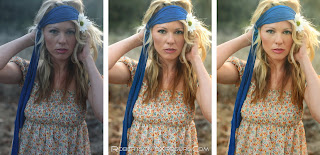
Just got back from another short trip to Mexico City, Aguascalientes, and Puebla doing some video work for Cisco systems. I took my DSLR along this time but I had very few opportunities to shoot. This was the view from my hotel room on the 21st floor of the W.
I decided to compile a few tips on traveling with your photo/video gear because I was pretty proud of myself for not having to check any luggage or equipment the whole trip.
That being said,
Tip #1 : Don't check your gear if you don't have to.Nothing is going to screw up your shoot like having your equipment damaged, lost or delayed. If your gear meets your airlines carry on size requirements ( generally about 14 x 9 x 22 in ) take whatever you can onboard. Cameras especially should not be placed with checked luggage.
Here are the few items that you
cannot take onboard:
Certain flammable types of film/print stocks.
Compressed ( canned ) air products
Gaff tape ( not sure why, but I've had it taken by security )
Tip #2: Pack light and be creativeTripods:
I was really concerned on this trip that I would have trouble getting my small photo/video tripod on board but a friend told me a trick. If your tripod has a removable head, unscrew it and put the head in your carry-on. If you strap the legs of the tripod to the outside of your camera bag, boom, all of a sudden you've got only two items that meet carry on requirements. ( I did get my bag inspected all five times I cleared security. They really wanted to see what that tripod head was. )
If your tripod has spikes on the feet see if they are removable. The ones on my tripod are fixed but I screwed the floor protector nuts down over the tips to make them appear less threatening.
Gaff Tape:
Take some foot long strips and tape them somewhere on the interior of your camera bag. For most small shoots you won't need a whole roll anyway.
Tip #3: Work with the TSA agentsWhen you approach the X-ray machine tell the agent that your bag has camera equipment in it and ask them if they would like you to place it separately into bins. Sometimes they will ask you to, other times they will just tell you to run it through whole. Generally after they see all the electronics in your bag someone will ask you to do a hand inspection. Just be cooperative and help them repack the bag if it helps keep your equipment organized. Remember they are given lot of discretion in the way they enforce the security regulations, so work with them.
 To be honest I didn't have time to learn about each of the plates we shot, so I don't really know what all of these are. Here is some cake.
To be honest I didn't have time to learn about each of the plates we shot, so I don't really know what all of these are. Here is some cake. For these food shots we were working on the patio and using ambient daylight as the key. I filled in from the right side using a Canon 580EX II speedlite at 1/16th power.
For these food shots we were working on the patio and using ambient daylight as the key. I filled in from the right side using a Canon 580EX II speedlite at 1/16th power. I honestly have no idea what this is but it looks nice. Something like a pork sushi roll I think.
I honestly have no idea what this is but it looks nice. Something like a pork sushi roll I think.






